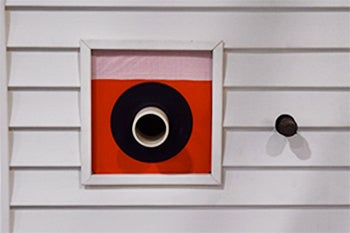+86 512 5879 0108
+86 512 5879 0108
When making home repairs or modifications, especially work involving roofing and plumbing, it is vital to ensure leak-free installation and avoid accidents at work. Here are some professional tips designed to help you achieve this goal when performing roof installation or repair.

1. Understand the importance of Flashing on roofs
Roof flash is an important component to prevent roof leakage and is used to seal various penetration points on the roof, such as pipes, chimneys, etc. Choosing the right flash material and installing it correctly is crucial to maintaining the integrity and water resistance of the roof.
2. Choose the right roof flash
When choosing roof flash, there are several factors to consider:
Roof Pitch: If your roof is flat, choose a flash that can accommodate a 90 degree pipe Angle. For sloping roofs, a flash designed with a corresponding tilt Angle should be selected to ensure that it matches the slope of the roof.
Location and climate: Choose the right flash material according to the location and climate conditions of the house. For example, in areas with more rain, flash materials with stronger waterproof performance should be selected.




3. Ensure safe and effective installation procedures
Preparatory work
Make sure the work area is safe and wear personal protective equipment such as hard hats, non-slip shoes and gloves.
Clean the roof surface and remove old, broken glitter and other debris.
Installation process

Measure and crop the flash: Precisely measure and crop the flash based on the size of the pipe or penetration point. Make sure the flash completely covers and seals the penetration point.
Apply adhesive: Apply an appropriate amount of adhesive to the flashing light and roof surface to increase adhesion and prevent water leakage.
Install flash: Fit the flash tightly around the penetration point, making sure there are no gaps or overlapping parts. Use appropriate tools (such as hammers and nails) to secure the flash to the roof.
Covering asphalt linoleum paper: In some cases, it may be necessary to cover the flash with a layer of asphalt linoleum paper to provide additional waterproof protection.
Install shingles or coverings: Ensure that all shingles or coverings are properly installed above the flash and that nails are located below the shingles to prevent leaks.
Inspection and testing
Water testing: After all work is done, water is sprayed on the roof using a hose for 15 minutes to simulate rain conditions. Then check the house for leaks at the outlet of the pipe. If no water leak is found, the flash is successfully installed.
4. Precautions
When working on the roof, be careful to avoid accidents such as falling.
Ensure that all tools and equipment are in good condition and correct operating procedures are followed.
Follow safety guidelines when working with chemicals, such as adhesives, and ensure good ventilation.
conclusion
By following the professional tips and safety steps described above, you can ensure that your roof installation or repair is leak-free and you can effectively avoid accidents at work. This not only helps protect your home from water damage, but also extends the life of your roof.
ZHANGJIAGANG NEICO TOOLS CO., LTD.
Add.: NO.17-18, Building 6, International Trade City, Tangqiao Town, Zhangjiagang 215600, Jiangsu, China
Mob: +86 139 1570 3340
Tel.: +86 512 5879 0108
Fax: +86 512 5879 0108
Skype: neicotools
E-mail: sales@neicotools.com
Web: www.neicotools.com
Products
Site Map